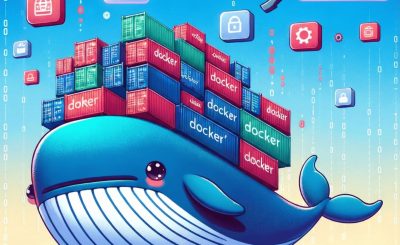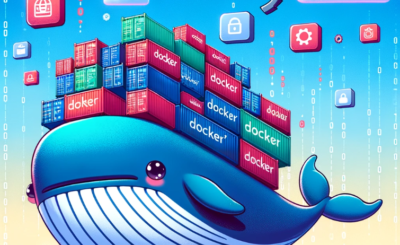The chasm between local development environments and cloud infrastructure has long been a source of frustration for developers. Inconsistencies in dependencies, configurations, and runtime environments often lead to deployment headaches and the infamous “works on my machine” syndrome. Docker, a revolutionary containerization platform, dramatically shrinks this gap, effectively bringing the cloud’s consistency and scalability to your local development machine. This allows developers to create, test, and deploy applications with unprecedented ease and reliability. This article delves into how Docker achieves this, transforming the way we build and deploy software.
Table of Contents
Understanding Docker and Containerization
What is Docker?
Docker is a platform that uses operating-system-level virtualization to deliver software in packages called containers. These containers bundle the application and all its dependencies—libraries, system tools, runtime—into a single unit. This ensures that the application runs consistently across different environments, regardless of the underlying operating system. This consistency is the key to mirroring cloud environments locally.
Why Containers are Crucial
Containers offer several advantages over traditional virtual machines (VMs):
- Lightweight: Containers share the host operating system’s kernel, making them significantly lighter and faster than VMs, which require their own full OS.
- Portability: “Build once, run anywhere” is a core Docker principle. Containers can be easily moved between different environments (development, testing, production, and cloud) without modification.
- Scalability: Docker containers can be easily scaled up or down based on demand, making them ideal for microservices architectures.
- Isolation: Each container is isolated from other containers and the host OS, enhancing security and preventing conflicts.
Docker’s Role in Local Development
By running Docker on your local machine, you create a consistent environment that closely mirrors your cloud infrastructure. This eliminates the discrepancies that often arise due to differences in OS versions, libraries, and configurations. You essentially build and test in a production-like environment on your laptop, drastically reducing the chances of surprises during deployment.
Bringing Cloud Environments Locally with Docker
Replicating Cloud Configurations
One of Docker’s strengths lies in its ability to replicate cloud configurations on a local machine. You can define the exact environment (operating system, dependencies, etc.) required by your application in a Dockerfile. This file acts as a blueprint, instructing Docker on how to build the container image. Once the image is built, you can run the container locally, replicating the cloud’s environment perfectly.
Using Docker Compose for Complex Applications
For applications composed of multiple services (e.g., a web server, database, message queue), Docker Compose simplifies the management process. Docker Compose uses a YAML file (docker-compose.yml) to define and run multi-container applications. This is incredibly valuable for mirroring complex cloud deployments locally.
Example: A three-tier application (web server, application server, database) can be defined in docker-compose.yml, specifying the images, ports, and volumes for each service. This allows developers to run the entire application stack locally, replicating the cloud infrastructure’s architecture precisely.
Working with Docker Images and Registries
Docker images are read-only templates used to create containers. Public registries like Docker Hub host a vast repository of pre-built images, allowing you to quickly integrate existing components into your projects. This reduces the need to build every component from scratch and accelerates development. You can also create and push your custom images to private registries for better security and control, mirroring your organization’s cloud infrastructure’s registry approach.
Examples: Docker in Action
Scenario 1: Basic Node.js Application
Let’s imagine a simple Node.js application. Instead of installing Node.js directly on your system, you can create a Dockerfile that specifies the Node.js version and your application’s code. This ensures your application runs consistently, regardless of the host system’s Node.js installation.
Dockerfile:
FROM node:16
WORKDIR /app
COPY package*.json ./
RUN npm install
COPY . .
CMD [ "node", "index.js" ]
Scenario 2: Multi-Container Application with Docker Compose
Consider a more complex scenario: a web application with a separate database. Using Docker Compose, you can define both containers (web server and database) in a single YAML file. This mirrors a microservices architecture often used in cloud deployments.
docker-compose.yml:
version: '3.7'
services:
web:
build: ./web
ports:
- "3000:3000"
db:
image: postgres:13
ports:
- "5432:5432"
Scenario 3: Integrating with CI/CD Pipelines
Docker seamlessly integrates with CI/CD pipelines. You can build Docker images as part of your automated build process, and then push these images to a registry (e.g., Docker Hub or a private registry). This ensures that the same consistent images used in development are deployed to your cloud environment. This significantly reduces the risk of deployment issues.
Frequently Asked Questions (FAQ)
Q: Is Docker difficult to learn?
No, Docker has a relatively gentle learning curve, especially for developers familiar with the command line. The Docker documentation is comprehensive and there are many online resources to assist beginners.
Q: How does Docker improve security?
Docker’s container isolation helps improve security by containing processes and their dependencies. This limits the potential impact of vulnerabilities in one container on other containers or the host OS.
Q: Does Docker replace virtual machines?
Docker and VMs serve different purposes. VMs offer complete system virtualization, while Docker provides operating-system-level virtualization. In many cases, they can complement each other. For example, you might run multiple Docker containers on a single VM.
Q: What are some popular Docker alternatives?
While Docker is the dominant containerization platform, other options exist, including containerd, rkt (Rocket), and Podman.
Q: How does Docker help with collaboration?
By providing a consistent development environment, Docker simplifies collaboration. Developers can easily share their Docker images, ensuring everyone is working with the same environment, regardless of their local setups.
Conclusion
Docker has revolutionized software development and deployment by bridging the gap between local development and cloud environments. By enabling developers to run consistent, production-like environments on their local machines, Docker significantly reduces the risk of deployment issues, improves team collaboration, and accelerates the overall software development lifecycle. Mastering Docker is no longer a luxury-it’s a necessity for any serious developer aiming for efficient, scalable, and reliable application development and deployment.
By utilizing Docker’s powerful capabilities, organizations can streamline their workflows, enhance security, and achieve greater agility in their cloud-based applications. From basic single-container applications to complex microservices architectures, Docker proves to be an indispensable tool for modern software development, truly bringing the cloud to your local machine. Thank you for reading the DevopsRoles page!

